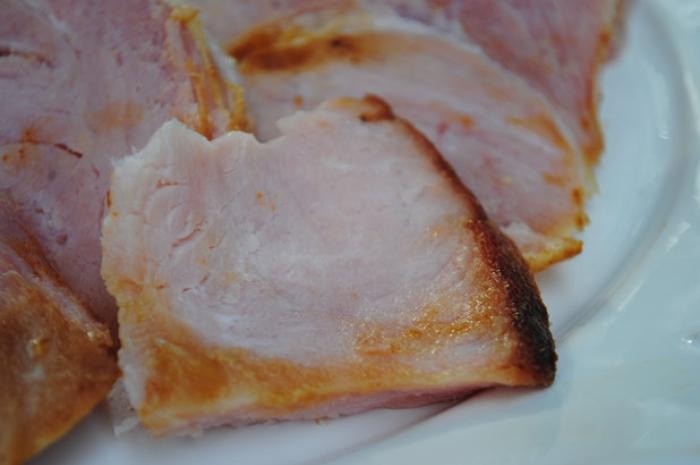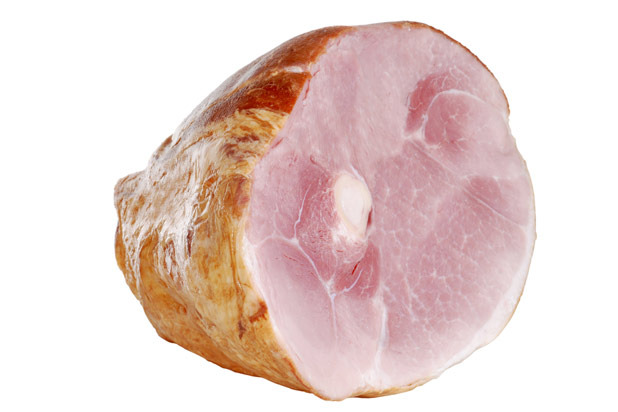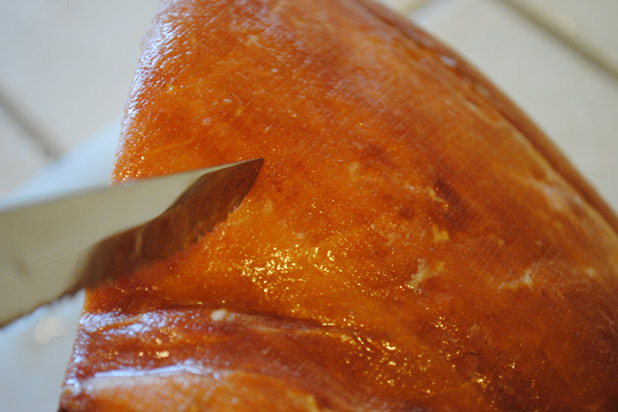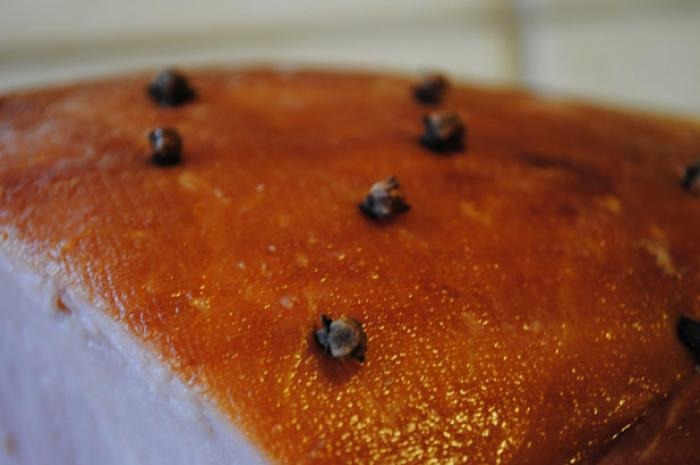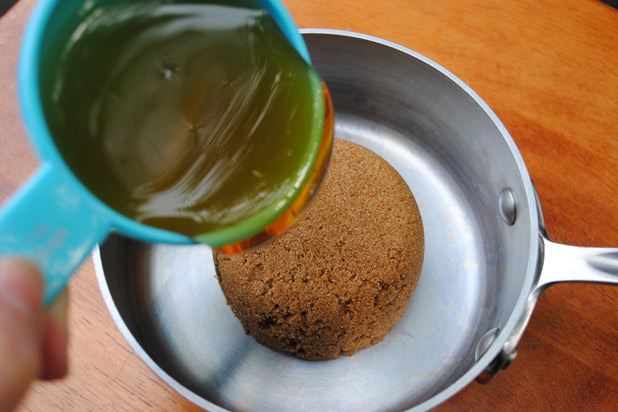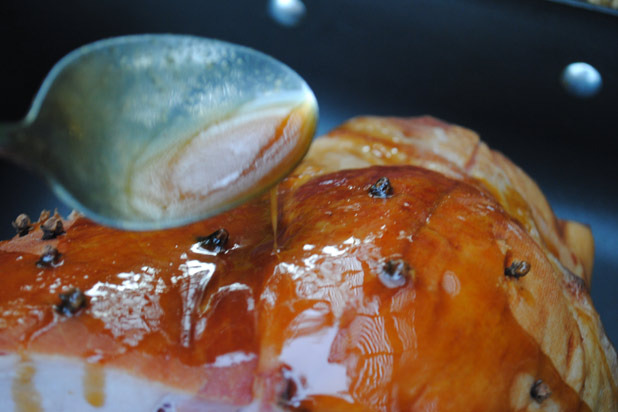How To Make The Perfect Holiday Ham
Although a traditional staple of Christmas dinner for centuries, holiday ham has caught some flak over the years, even from people besides Miss Piggy and Kermit the Frog. Ever hear a relative say, "We're just not ham people"? Don't worry, we have, too, and we're here to set the record straight. The pinkish meat gotten a reputation as a processed, boring meat usually found between two slabs of bread with some cheese, but we're happy to tell you that a roast holiday ham is a whole different story.
Juicy and sweet, a roast holiday ham gets its flavor from its thick outer layer of fat and a sweet, citrusy glaze that gets slathered on while baking. While there are many different techniques for preparing a ham, and a variety of recipes for the glaze, we constantly turn to one of our favorite recipes, which was passed along to us by a family member. To be as thorough as possible, we headed south and spoke with executive chef and owner of Trax Restaurant & Café in Pennsylvania, Steve Waxman, to develop our recipe even further. Waxman, who smokes and roasts all of his own meats, is a firm believer in a bone-in roast ham, and has his own secrets for adding flavor to the meat by using spices and a glaze. With our recipe and Waxman's tips, we've perfected the ultimate ham recipe for you to enjoy this holiday season. Our friends The Muppets are right when they say that Christmas is coming, but put the goose away this year and prepare our perfect holiday ham.
The Ham
For any roast ham recipe, you have to start with the ham, and we chose an applewood-smoked, bone-in ham. While boneless hams are better for handling and slicing, we like the bone-in option because it adds extra flavor to the meat while roasting, and Waxman likes to use the bone for soup and stocks once it has been cleaned of meat. While we're not against you smoking your own ham, a bone-in smoked ham can easily be purchased at your local butcher or any online meat retailer.
The Fat
The Flavors
Speaking of those flavors, the majority of spice for our ham comes from whole cloves. After we're done scoring the ham, we pierce it all over with whole cloves (spacing them about ½ to 1 inch apart). We thought we were done there, until Waxman suggested adding a pinch of allspice and cinnamon to the skin of the ham as well. As soon as the ham is seasoned, cover it with foil and let it bake for its first round of cooking.
The Glaze
While the ham is undergoing its pre-bake, we make the glaze. Our original recipe started with Dijon mustard, honey, brown sugar, orange, and lemon juice, but Waxman added one additional ingredient to the mix: ginger ale. While some people like to add water to their glaze to thin it out, Waxman adds ginger ale because the sugar found in the soda lends itself to creating a perfectly thick glaze, and it adds a nice flavor, too.
Glazing the Ham
After the ham has been baking for 30 minutes under foil, we take it out to coat it with the honey-Dijon glaze. We continue to cook it uncovered, glazing every half-hour, until the thicket part of the ham registers 120 degrees, about 20 minutes per pound.
The Perfect Holiday Ham
The resulting ham is a mouthwateringly tender roast that is coated in a sweet and savory crust. Each slice of the ham is moist and tender and retains that golden brown layer of fat that comes from baking with the glaze — just make sure you remove all of the cloves before serving. We like enjoying ours with an extra dollop of Dijon mustard to complement the glaze, and a creamy side of scalloped potatoes to offset the juicy (but slightly salty) meat.
